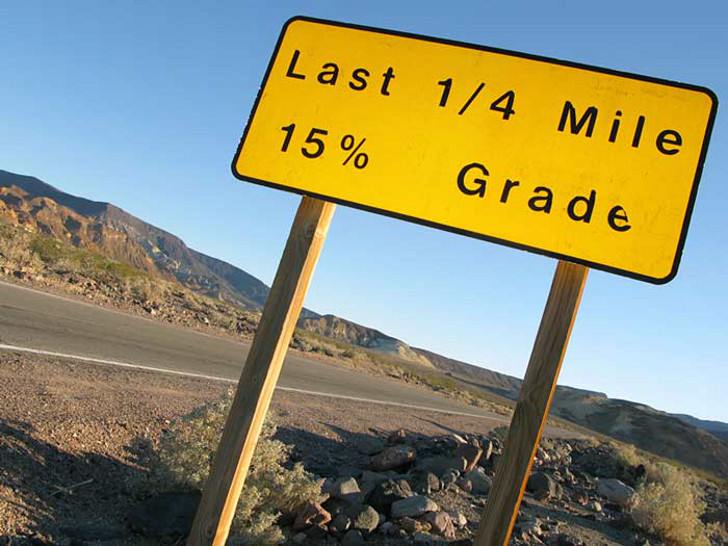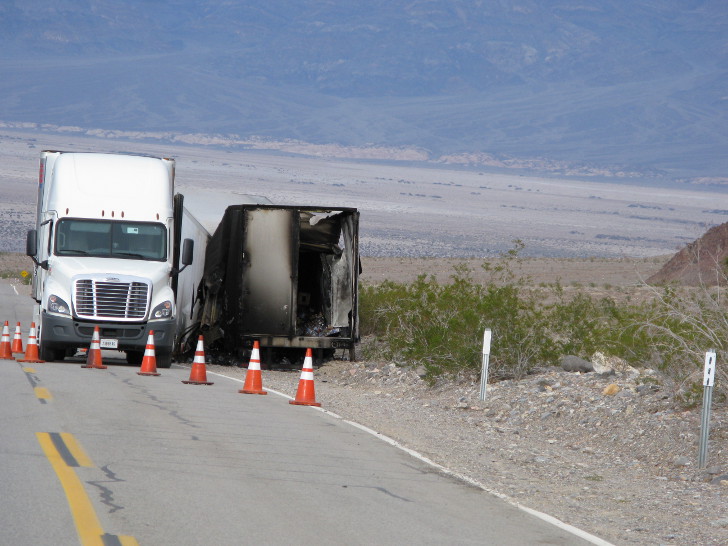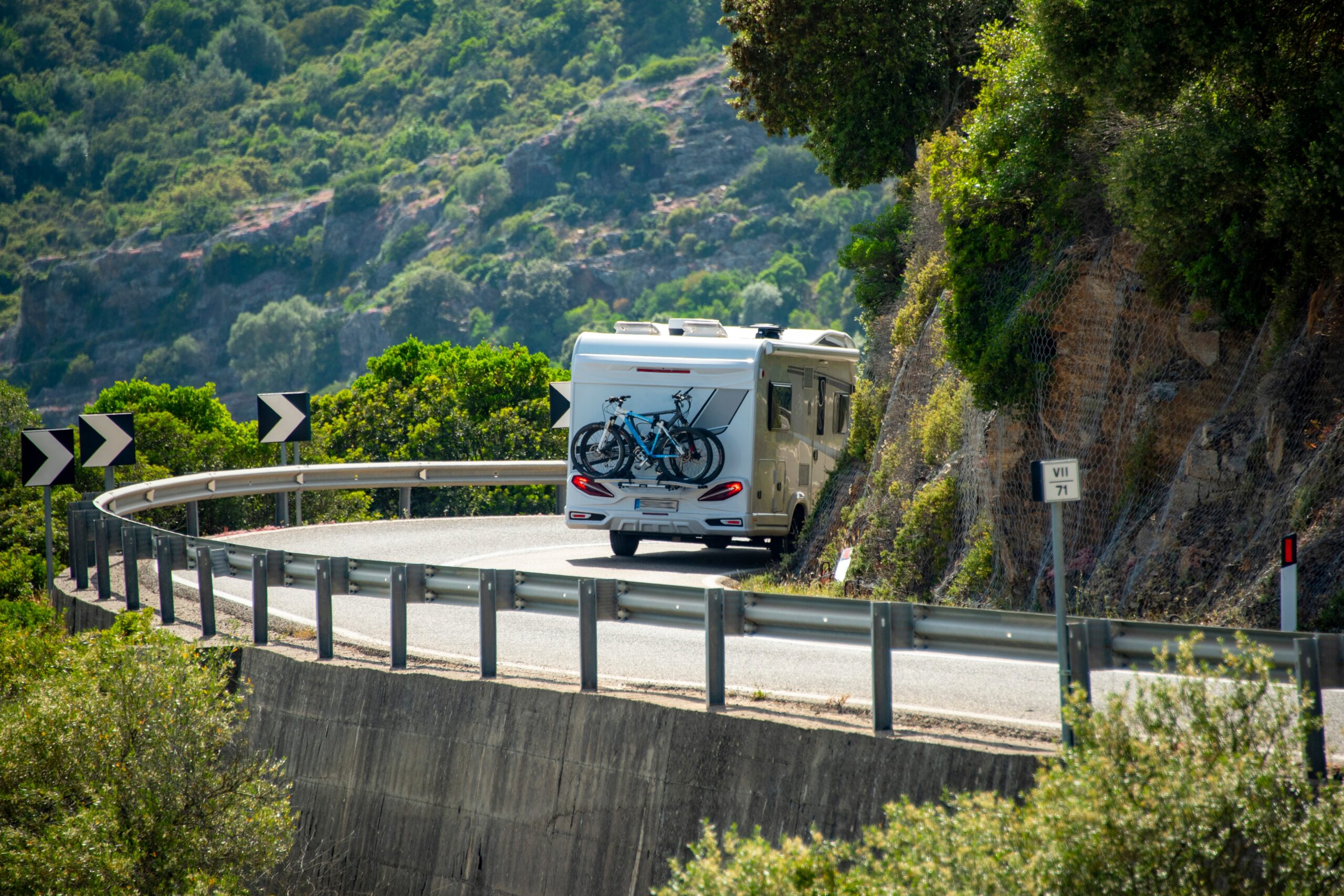When you see a sign like this, do you know how to avoid having your RV’s brakes catch fire?

Most RV newbies don’t realize that a steep mountain descent can do a lot of damage to an RV’s braking system or even destroy the RV entirely if it catches fire from overheated brakes.
Whether you drive a big Class A rig or haul a trailer, all vehicles need extra TLC to safely cruise through mountain passes. Here are five easy dos and don’ts to help you avoid a fire caused by overheated RV or trailer brakes.
DO: Pay attention to road signs.
When you see a mountain grade warning sign, prepare to change your driving habits. Get into the slow lane and let other drivers pass you while you ease off the gas pedal.
DON’T: Keep your foot on the brakes.
As your RV begins to slow down, remember that applying continuous brake pressure is a risky way to stop your heavy RV on a downhill descent.
Keeping your foot on the brakes or pumping them can cause them to overheat, lose friction and stopping power, and occasionally catch fire. Your goal is to only use your brakes long enough to enable you to safely downshift into a lower gear.
Apply firm pressure to slow down a few miles per hour, release your brakes, then move on to downshifting.
DO: Downshift into a lower gear.
Now it’s time to use a “downshifting” procedure to prevent damage to your RV’s brakes. Downshifting is how truckers safely negotiate mountain roads by reducing speed and shifting down into a lower gear. Resistance created by lower transmission gears will slow your RV down.
If your truck is equipped with an exhaust brake (also known as a “jake” or compression brake), use it. You’ll have a huge advantage over those of us who don’t.
Your goal is to be at least 10 miles-per-hour below posted speed limits.
DON’T: Let your transmission rev up too high.
Sometimes downshifting into a lower gear when you’re going too fast will cause your transmission to rev up too high, which can also cause damage.
That’s when using your RV’s brakes makes sense. Once again, apply firm but brief brake pressure until your transmission returns to safer operating levels.
As you descend the mountain, pay attention to your speed and listen to the transmission. If your speed picks up and the transmission begins to rev up again, repeat the brief braking procedure until you’re at least 10 miles-per-hour below posted speed limits.
DO: Put your ego aside, look for pull-outs and let others pass.
Drivers of smaller vehicles usually have little sympathy for big RVs on mountain roads. Maintain a safe enough speed so you can safely pull over into an oncoming pull-out and allow faster drivers to pass you.
This trucker’s brakes caught fire on a mountain pass. Don’t end up like him. Remember, your rig is called a “recreational vehicle” for a reason, so relax and you’ll get down the mountain safely and without brake failure.





Oh, and watch your tachometer, of course.
Well John I’m the nonsense writer 🙂 Sorry about that, you are right, it should have said to listen to your engine. Thanks for bringing that to our attention.
That’s when using your RV’s brakes makes sense. Once again, apply firm but brief brake pressure until your transmission returns to safer operating levels.
As you descend the mountain, pay attention to your speed and listen to the transmission. If your speed picks up and the transmission begins to rev up again, repeat the brief braking procedure until you’re at least 10 miles-per-hour below posted speed limits.
***************
Who writes this nonsense? …….listen to your transmission??? …….if your speed picks up and the transmission begins to rev up again???
Whaaaat? How are you supposed to monitor the “revs” on your transmission?
Ummmm, isn’t it the RPM on your engine that are a concern? Which can be easily monitored with the tachometer on your rig!